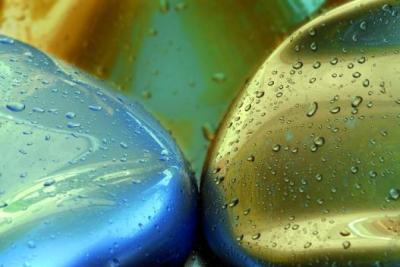Oct 11 2012
Integrated Processes without primer or with wet-on-wet application offer significant advantages for OEM coating for both business and the environment. On top of that, modern paintline and application technologies can considerably boost eco-efficiency.
 Waterborne systems score thanks to their low VOC levels
Waterborne systems score thanks to their low VOC levels
These are the findings of the recent comprehensive eco-efficiency analysis performed by BASF and Dürr, which used a holistic perspective to examine the paintline and coating technology. The results of the study permit the two companies to individually improve the eco-efficiency of OEM coatings at the car manufacturers’ plants.
The coating process is one of the most energy-intensive process steps in industrial automotive manufacturing. Volatile organic compounds (VOCs), energy consumption and CO2 balance play a major role. “The study confirms the path we have consistently followed for some three decades as we have developed waterborne, solvent-reduced or solvent-free paint systems. For instance, as early as 25 years ago, we introduced the first waterborne paint for OEM coating. We’re pioneers and technological leaders in this area,” said Dr. Walter Jouck, head of technology management at BASF Coatings.
The eco-efficiency analysis developed by BASF looks at environmental impact in proportion to a product's cost-effectiveness. It helps BASF and its customers decide which products are the best choice, both ecologically and economically. To this end, eco-efficiency analysis examines the entire life cycle of a product or process from raw materials sourcing to product manufacture and use, as well as disposal. The most important results of the current study refer to coating processes with primer, shortened coating processes and the use of state-of-the-art paintline and application technologies.
Waterborne systems score thanks to their low VOC levels
In processes with primers, BASF and Dürr studied the most important versions of solventborne and waterborne paint systems used in industry. The detailed findings show that waterborne processes consume more energy (air conditioning of the spraybooth and an additional intermediate dryer), thus causing more CO2 emissions than processes with solventborne paint. On the other hand, waterborne processes involve significantly lower emissions of solvents (VOCs). As a result, in the study, the waterborne processes show overall good results with respect to eco-efficiency.
Improving eco-efficiency with Integrated Processes
Integrated Processes are shortened coating processes in which the primer and, in turn, a baking step are eliminated. In the eco-efficiency study, both solventborne and waterborne Integrated Processes were evaluated compared to conventional primer processes. The results show a clear advantage for the shortened processes with regard to energy consumption, CO2 balance and VOC emissions. For instance, energy consumption and CO2 balance are each reduced by approximately 20 percent. When the potential for saving VOCs is compared, a significant improvement between waterborne standard processes and waterborne Integrated Processes is revealed. In general, for this reason, the Integrated Processes show a significantly higher eco-efficiency compared to the conventional primer processes.
Modern paintline and application technologies boost eco-efficiency
Improved modern paintline and application technologies can considerably boost the eco-efficiency of the coating process. For example, significant potential for savings is yielded with respect to the energy consumption of the spraybooths if they are operated with recirculating air. This technique allows the solvents to be removed efficiently from the spraybooth air by means of post-combustion. As a result, the eco-efficiency can also be significantly improved with solventborne processes.
“The analysis helps us offer our customers individualized advice, so that a solution can be provided for the car manufacturer that is optimal in terms of environmental friendliness and costs,” explained Dr. Alexander Haunschild, head of OEM Coatings Solutions Europe at BASF. “After all, the conditions and the impact factors at the car manufacturers and their plants vary. For this reason, there is no standard answer to the question as to which process is best. However, based on the analysis, BASF and Dürr can supply the best application process and the best application technology for each customer plant individually.”
Scope of the study
BASF established this holistic method as early as 1996 and was one of the first companies in the chemical industry to do so. Eco-efficiency analysis is validated by TÜV (German technical inspection and certification organization) and by NSF (National Sanitation Foundation). This study on the eco-efficiency of coating processes includes the raw materials of the coatings, the manufacturing process of the coatings, along with the energies and emissions required for this process. In addition, all energies, emissions, consumptions and costs during coating are identified. On the other hand, the study identifies all costs incurred during product manufacturing or use. This economic analysis, together with the assessment of the overall environmental impact, serves as a basis for eco-efficiency comparisons. The study does not refer to specific plants. Instead, the comparability of the statistics is ensured through realistic assumptions on consumptions, emissions and costs. A review by DEKRA, the German motor vehicle inspection association, confirms that the studied was performed in accordance with ISO 14040 and 14044.